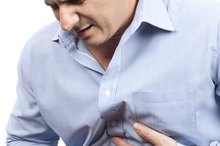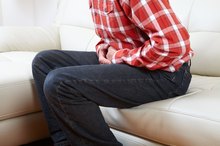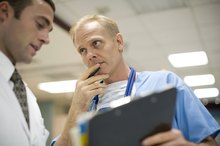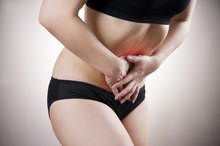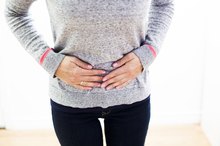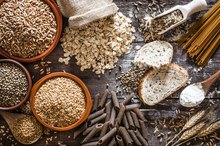10 Common Causes of Lower Left Abdominal Pain in Men
Almost every man will experience abdominal pain at some time during his life, especially on the lower left side. This area is home to myriad organs, including the stomach, small and large intestines, kidneys, pancreas, liver and gallbladder.
If you are experiencing serious medical symptoms, seek emergency treatment immediately.
For this reason, lower-left abdominal pain could be indicative of several different ailments, ranging from excess gas to kidney stones or appendicitis 6.
The concern for men, however, is that they are less likely to seek medical assistance than their female counterparts, says Rusha Modi, MD, a Los Angeles-based board-certified physician in internal medicine, gastroenterology and hepatology, and assistant professor of clinical medicine at the Keck School of Medicine of the University of Southern California 3.
“Fear of physicians, embarrassment or stigma, as well as a desire to be stoic or strong can sometimes be reasons that limit men's ability to get help for pain,” he tells LIVESTRONG.com.
One general rule of thumb Dr. Modi uses with patients is to ask them if the pain they are experiencing is interrupting their daily routine. “If they have to regularly move, eat or sleep differently or with difficulty because of the pain, then it's worth investigating,” he says. “Pain, while unpleasant, is a useful signal that may indicate underlying health problems, so it is best not to ignore it.”
Here are some of the most common causes of pain in the lower left abdomen in men — and when you should see a doctor.
1. Gas or Indigestion
Treatment can include over-the-counter medications that help alleviate gas, or dietary changes. But you should see a doctor if you're experiencing other symptoms, such as fever, constipation or diarrhea, nausea or vomiting, shortness of breath or pain radiating to other areas of the body.
2. Ulcerative Colitis
Diverticulitis Flare-Up Symptoms
Learn More
This chronic form of irritable bowel disease is marked by painful open sores called ulcers in the lining of the colon, part of which is located in the lower left abdomen, according to the Mayo Clinic 4. The cause is unknown, but those who have a close relative with the disease are at a higher risk.
Ulcerative colitis (UC) most often begins in the rectum and then moves upward into the left side of the colon as the disease worsens 4. Symptoms usually develop over time, and in additional to abdominal pain they can include:
- Bloody diarrhea
- Rectal pain
- Rectail bleeding
- Urgency to use the bathroom
- Weight loss
- Fatigue
- Fever
This condition is not curable, but treatment by a physician can help ease symptoms. See your doctor right away is you suspect you have UC and experience a persistent change in your bowel habits along with abdominal pain, blood in your stool, ongoing diarrhea or an unexplained fever that lasts more than a couple days.
- This chronic form of irritable bowel disease is marked by painful open sores called ulcers in the lining of the colon, part of which is located in the lower left abdomen, according to the Mayo Clinic.
- Symptoms usually develop over time, and in additional to abdominal pain they can include: * Bloody diarrhea * Rectal pain * Rectail bleeding * Urgency to use the bathroom * Weight loss * Fatigue * Fever This condition is not curable, but treatment by a physician can help ease symptoms.
3. Appendicitis
This fairly common infection of the appendix usually presents on the right side, where the organ is located, but it can occasionally be symptomatic on the left.
“The pain most commonly presents as dull and achy more midline in the abdomen, but can then become sharp and knife-like,” says Dr. Modi.
According to MedlinePlus, other symptoms may include 6:
- Nausea and vomiting
- Swelling in the abdomen
- Low fever
- Low appetite
- General weakness
The condition is most common in those in their late teens through early 30s. It is usually treated with antibiotics and urgent surgical intervention, since it can become life-threatening, says Dr. Modi. If you think you might have appendicitis, see your doctor or go to an urgent care center immediately 6.
- This fairly common infection of the appendix usually presents on the right side, where the organ is located, but it can occasionally be symptomatic on the left.
- “ The pain most commonly presents as dull and achy more midline in the abdomen, but can then become sharp and knife-like,” says Dr. Modi.
4. Diverticulitis
Hernia Signs and Symptoms in a Male
Learn More
This condition is marked by inflammation of the diverticula, pouches that commonly form in the lining of the colon, according to the Mayo Clinic 7.
Symptoms typically include:
- Constant lower-left abdominal pain that last for several days
- Low grade fever
- Nausea
- Changes in bowel habits, usually constipation
In mild cases, a health care provider will likely prescribe an outpatient course of antibiotics. But in more severe cases, urgent surgery may be required to prevent complications like prominent abscesses, bowel perforation or widespread infection.
“In contrast to appendicitis, diverticulitis historically has been a problem of older individuals (ages 50 to 80), although more research is demonstrating that diverticulitis can occur even in people in their 30s,” says Dr. Modi 67. “If you suspect you have diverticulitis, but otherwise feel well, a clinic visit with your provider is recommended. 7”
- This condition is marked by inflammation of the diverticula, pouches that commonly form in the lining of the colon, according to the Mayo Clinic.
- In contrast to appendicitis, diverticulitis historically has been a problem of older individuals (ages 50 to 80), although more research is demonstrating that diverticulitis can occur even in people in their 30s,” says Dr. Modi 6”
5. Colorectal Cancer
Colorectal or colon cancer is the second leading cause of cancer deaths in the U.S., according to the National Cancer Institute 18. However, it often doesn't cause any symptoms, says Dr. Modi. When it does, though, they can include:
- Low-grade persistent abdominal pain
- Rectal bleeding
- Changes in bowel habits, notably constipation
- Unexplained weight loss
- Profound fatigue
“It is important that all patients older than 45 have appropriate colorectal cancer screening (either stool assays or a colonoscopy in most cases) — and sooner if you have colorectal cancer in your family or a personal history of high-risk conditions such as inflammatory bowel disease," says Dr. Modi 2.
6. Urinary Tract Infection
Pain in the left lower abdomen may sometimes be caused by an infection in the bladder, also known as cystitis. Although urinary tract infections, or UTIs, are more common in women, they can affect men as well.
“Mild cases can be treated with a short course of antibiotics, such as bactrim or macrobid.”
While some research has speculated on the role of cranberry juice or supplements, it is unclear whether or not these can relieve symptoms.
Read more: What You Should Know About Azo Pills
- Pain in the left lower abdomen may sometimes be caused by an infection in the bladder, also known as cystitis.
- Mild cases can be treated with a short course of antibiotics, such as bactrim or macrobid.”
7. Kidney Stones
According to the Urology Care Foundation, risk factors for kidney stones include dehydration, a diet high in salt and/or animal protein, obesity, certain bowel conditions that cause:
- diarrhea (like Crohn's disease or ulcerative colitis)
- certain medication
- a family history of kidney stones 49
8. Inguinal Hernia
The condition is much more common in men than women, according to Dr. Sonpal, and symptoms include:
- a small
- painful bulge on the side of the groin that may get larger over time
- get worse due to coughing
- straining
- lifting heavy objects or other physical activity
9. Testicular Torsion
In testicular torsion, the testicle rotates, which causes lowered blood flow to the testicles as well as severe pain and swelling.
Though the cause of the condition is unknown, Dr. Sonpal explains that it can happen in any male, most often in boys aged 12 to 16. Some symptoms include:
- Sudden, severe scrotum pain and swelling
- Abdominal pain
- Nausea
- Vomiting
- Painful urination
- Fever
If you experience any of these symptoms, make a visit to your primary care provider.
10. Musculoskeletal Pain
This type of abdominal pain doesn't necessary involve internal organs.
“This is increasingly more common because of our sedentary lifestyles, which can cause poor posture and cause bio-mechanical inefficiency.”
If you are having persistent pain with no perceivable cause, musculoskeletal pain may be the culprit. Physical therapy with an emphasis on strength, postural stability and improving myofascial activation is the most common form of treatment.
Related Articles
References
- National Cancer Institute: Cancer Stat Facts -- Cancer of Any Site
- American Cancer Society: Colorectal Cancer Risk Factors
- Rusha Modi, MD, MPH
- Mayo Clinic: "Ulcerative Colitis"
- MedlinePlus: "Appendicitis"
- Mayo Clinic: "Diverticulitis"
- National Cancer Institute: "Common Cancer Types"
- Urology Care Foundation: "What are Kidney Stones?"
- Touro College of Osteopathic Medicine: "Niket Sonpal, MD"
- Harvard Health Publishing: "Inguinal Hernia"
Resources
